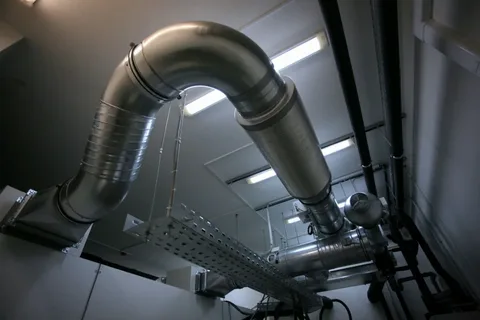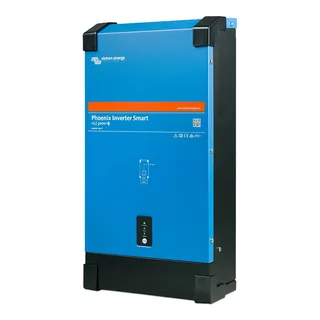Proper ventilation is often overlooked when it comes to creating a comfortable and healthy living environment. Yet, the air you breathe inside your home can significantly impact your well-being. An effective Ventilation System not only helps maintain indoor air quality but also plays a crucial role in regulating temperature and controlling moisture levels. With various options available, choosing the right ventilation system for your home can seem daunting. But fear not! Whether you’re looking to eliminate stale air or improve energy efficiency, understanding the different systems is key. Let’s dive into how you can select the best vent system tailored to your needs and transform your living space into an oasis of fresh air.
The Importance of Proper Ventilation in Your Home
Proper ventilation is essential for maintaining a healthy home. It allows fresh air to circulate while removing stale, polluted air. This exchange helps prevent the buildup of harmful pollutants and allergens that can affect your health.
Good ventilation also regulates humidity levels, reducing the risk of mould growth. Excess moisture can lead to structural damage and create an ideal environment for pests. By ensuring adequate airflow, you protect both your home and your family.
Moreover, proper venting contributes to energy efficiency. It balances indoor temperatures by allowing heat escape during warmer months and trapping warmth in winter. This balance reduces reliance on heating and cooling systems, ultimately lowering utility bills.
In addition to comfort and savings, well-ventilated homes promote better sleep quality. Clean air can enhance relaxation and improve overall mood, making it easier for everyone to unwind after a long day.
Different Types of Air Ventilation System
Several types of air ventilation system cater to various needs. Each plays a crucial role in maintaining indoor air quality.
Natural ventilation relies on openings like windows and vents. It harnesses outdoor breezes to circulate fresh air while expelling stale air. This method is eco-friendly but can be unpredictable.
Mechanical ventilation uses fans and ducts to control airflow actively. There are two main types: exhaust systems, which remove indoor air, and supply systems that bring in outside air. These installations ensure consistent airflow regardless of weather conditions.
Balanced ventilation combines both approaches for optimal performance. It brings in fresh air while exhausting the same amount of stale air, promoting energy efficiency.
Heat recovery ventilators (HRVs) take it further by transferring heat from outgoing stale air to incoming fresh air, reducing energy costs during extreme temperatures.
Factors to Consider When Choosing a Vent System
Choosing the right vent system for your home involves several important factors. First, consider the size of your space. Larger homes may require multiple units to ensure adequate airflow.
Next, consider the climate in your area. A dehumidifying system can be essential in humid regions. Conversely, systems designed to retain heat might benefit colder climates.
Energy efficiency is another critical aspect. Look for highly-rated systems that promise reduced energy bills while providing effective ventilation.
Don’t forget aesthetics and noise levels, either. Some systems operate silently, while others can be quite noisy.
Check local building codes and regulations before making a decision. Compliance ensures safety and functionality in your installation process without unexpected complications.
Assessing Your Home’s Needs
Understanding your home’s unique ventilation needs is essential. Every space is different, influenced by size, layout, and climate.
Start by evaluating the areas where airflow feels stagnant. Rooms that trap heat or humidity can benefit from improved ventilation. Please pay close attention to attics and basements; these often require more thorough assessment due to their challenges.
Consider the number of occupants in your home as well. More people mean increased moisture and pollutants that need proper dispersal.
Don’t remember appliances, too. Kitchens and bathrooms generate significant humidity, which should be managed effectively to avoid mold growth.
Take note of any specific issues you’ve encountered—like draftiness or excessive dust accumulation—as these can guide your decision-making for a vent system tailored specifically for your environment.
Evaluating Home Air Circulation System Efficiency
To assess the efficiency of your home air circulation system:
Start by monitoring airflow.
Check vents and registers for obstructions that could hinder performance, and clear away furniture or debris blocking this pathways.
Next, consider measuring temperature differences between rooms. An effective ventilation system should maintain consistent temperatures throughout your home. It might indicate an issue if certain areas feel stuffy or excessively warm.
Inspecting ductwork is also essential. Look for leaks or gaps that can waste energy and reduce circulation effectiveness. Sealing these openings may drastically improve overall performance.
Regular maintenance is also key to ensuring efficiency. Change filters to keep the system running smoothly and at optimal capacity.
Don’t overlook noise levels; unusual sounds from your HVAC unit might signal inefficiencies worth investigating further.
Professional Installation vs DIY
Regarding vent system installation, choosing between professional help and a DIY approach can be challenging. Hiring professionals brings expertise and experience. They know how to handle complex systems efficiently. This can save you time and potential frustration.
On the other hand, tackling the project yourself is appealing to those looking to save money. If you’re handy with tools and have some knowledge of ventilation systems, a DIY installation could work in your favour. Just ensure you fully understand local building codes.
However, improper installation can lead to inefficiencies or even damage over time. Weighing your skills against potential risks is key before making a decision. Consider whether you’re comfortable managing unexpected challenges that may arise during the process without expert guidance.
You have two primary options when installing your vent system: professional installation or do-it-yourself (DIY). Each choice has its merits and drawbacks.
Hiring a professional can save you time and ensure the job is done correctly. Experts understand local building codes and regulations, which can be complicated for the average homeowner. They also bring experience, minimizing potential mistakes that could lead to inefficiencies or safety hazards.
On the other hand, DIY installations are appealing to those who enjoy home improvement projects. They provide an opportunity to learn new skills while saving money on labour costs. However, you may encounter challenges along the way without proper knowledge about ventilation systems. Installation mistakes could compromise airflow efficiency or even damage your system.
Consider your comfort level with home repairs before making a decision. A DIY approach might suit you well if you’re confident in your abilities and ready for hands-on work. But if you’d rather leave such tasks to experts who guarantee quality service and adherence to safety standards, hiring a professional could be worth the investment.
Whether you choose to DIY or hire, professionals should align with your home’s specific needs and your skills and preferences regarding home maintenance.
Tips for Maintaining Your Vent System
Regular maintenance ensures your vent system operates efficiently. Start by inspecting vents and ducts for dust and debris. A clean system promotes better airflow.
Check filters monthly. Clogged filters can restrict air movement, making your system work harder. Replace them as needed to maintain optimal performance.
Keep an eye on the outside components, too. Clear any leaves or obstructions around exhaust outlets to prevent blockages that could hinder ventilation.
Consider scheduling professional inspections annually. Experts can identify potential issues before they become costly repairs.
Monitor indoor air quality regularly. This will help you determine whether your vent system is effectively circulating fresh air throughout your home, ensuring a healthy living environment for you and your family.
Key Features of Air Ventilation System for Home
When selecting an Air Ventilation System for Home for your home, consider several key features that enhance comfort and efficiency. First, look for adjustable airflow controls. These allow you to customize the air circulating through various rooms based on your needs.
Energy efficiency is another critical aspect. Systems with high Energy Star ratings can significantly lower energy bills while providing optimal performance.
Noise levels matter, too; choosing a quieter model ensures a peaceful environment. You don’t want to disrupt daily activities with constant humming or whirring sounds.
Additionally, filter quality plays a vital role in maintaining indoor air quality. High-efficiency filters trap allergens and pollutants effectively.
Smart technology integration offers convenience by enabling remote control and monitoring via smartphone apps. This feature can help manage your home’s ventilation even when you’re away.
Cost and Maintenance Considerations
Understanding costs is essential when selecting a ventilation system. Initial prices can vary widely depending on the type of system you choose. Basic models might be more budget-friendly, while advanced options come with a higher price tag but offer superior efficiency.
Maintenance is another crucial factor to consider. Regular upkeep ensures your vent system operates effectively over time. This may include cleaning ducts and filters or checking for leaks.
Neglecting maintenance can lead to costly repairs in the future. When deciding on a system, you’ll want to factor in these potential expenses.
Some systems require professional servicing, which adds to ongoing costs. Balancing your budget with long-term savings will guide your decision-making process effectively.
Residential Roof Ventilation Systems
Residential roof ventilation systems are crucial in maintaining your home’s climate. They help regulate temperature and moisture levels, ensuring your attic stays cool during hot months and dry throughout the year.
Various roof vents are available, including ridge vents, gable vents, and soffit vents. Each type has its benefits depending on the structure of your home. Ridge vents work along the roof’s peak to allow hot air to escape easily, while soffit vents enable fresh air intake from below.
Properly installed systems improve energy efficiency and extend the lifespan of roofing materials by preventing mould growth and wood rot. When selecting a system for your home, consider factors such as local climate conditions and existing architectural features.
Regular inspections can ensure these systems remain effective over time. A well-ventilated roof translates into a healthier living space overall.
Installation and Integration
Planning and Location
Installing a vent system isn’t just about placing vents in the right spots; it’s about seamless integration with your home’s structure. Proper planning is key. Start by identifying optimal locations for airflow. Consider existing structures like roofs, walls, and even windows. Each space has unique characteristics that can affect performance.
Component Compatibility
Next, ensure compatibility among various components of your vent system. This may involve ducts, fans, or filters—all working together to create an efficient airflow network. Proper alignment and integration of these components are crucial for effective ventilation.
DIY Considerations and Building Codes
If you opt for a DIY approach, familiarize yourself with local building codes and regulations. You want everything up to standard while avoiding future headaches. Additionally, sealing joints properly during installation is vital. Leaks can significantly undermine efficiency and lead to unnecessary energy costs later on.
Challenges in Older Homes
When integrating new systems into older homes, be aware of challenges such as outdated wiring or insulation issues requiring extra attention. These factors can impact the installation process and overall system performance. Addressing these issues early on will help ensure a smooth integration and optimal functioning of your new vent system.
By carefully planning and addressing these key aspects, you can achieve a well-integrated and efficient vent system that enhances your home’s air quality and energy efficiency.
Conclusion
Choosing the right ventilation system can significantly impact your home’s comfort and energy efficiency. It allows fresh air to flow while expelling stale air, creating a healthier living environment. Consider your unique situation when making this decision. Every home has different needs based on size, layout, and existing airflow dynamics. Evaluate the pros and cons of various systems available in the market today. Understanding these details will help you make an informed choice that suits your lifestyle and budget. Whether you choose professional installation or a DIY approach, ensure you have access to reliable resources for guidance.
FAQs
Choosing the right vent system for your home can significantly improve air quality and comfort. Here are some frequently asked questions to help you make an informed decision.
What is the best type of ventilation system for my home?
The best type of Ventilation System depends on your needs, climate, and home design. Options include natural ventilation, mechanical systems like exhaust fans or whole-house ventilators, and hybrid models that combine both methods.
How do I know if my current vent system is working efficiently?
You can assess efficiency by checking airflow consistency throughout your home. Also, look for signs such as excess humidity, mould growth, or stagnant air in certain areas, indicating poor circulation.
Can I install a vent system myself?
While DIY installation may initially save money, professional installation often ensures better performance and compliance with local building codes. It’s essential to weigh the benefits against potential long-term issues from improper setup.
With these insights, you’re well on your way to selecting a ventilation solution tailored to your home’s unique requirements.
| Related Business Listings |
| Contact Directory |
| Local Business Profiles |




